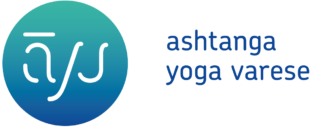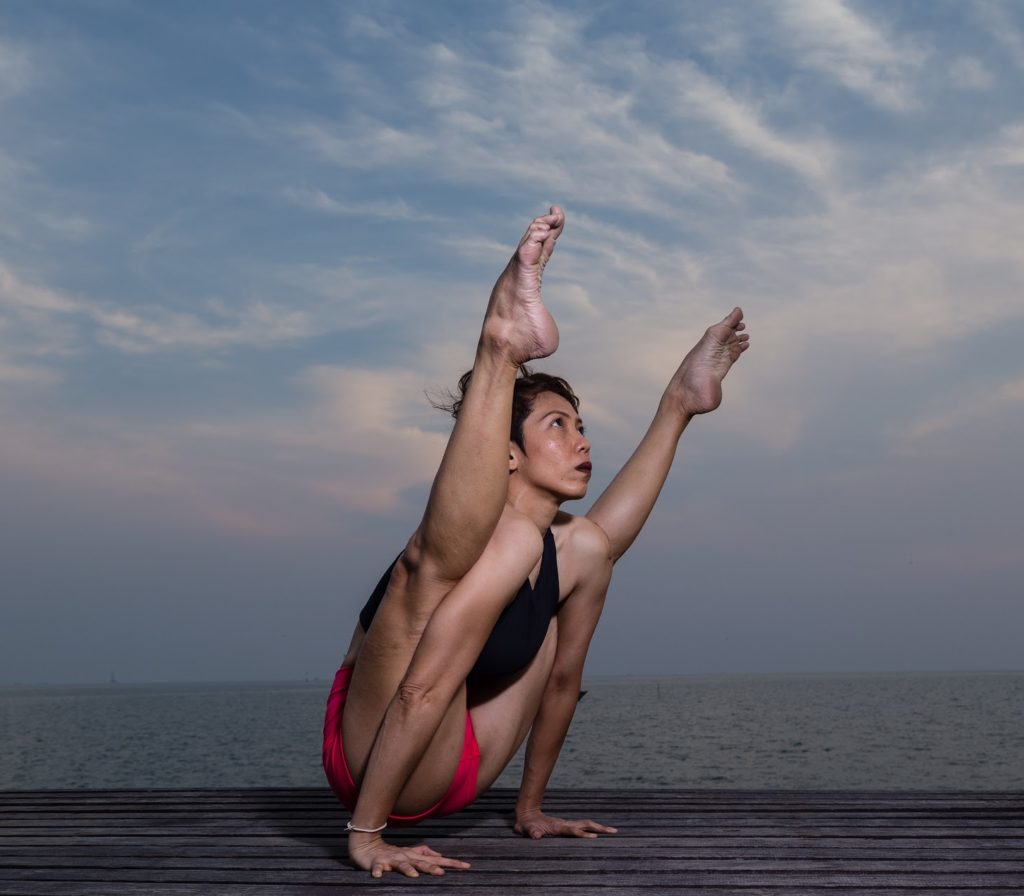La pratica / The practice
Ashtanga Yoga è un antico sistema di yoga che è stato insegnato da Vamana Rishi nello Yoga Korunta. Questo testo è stato impartito a Sri T. Krishnamacharya nel primi anni del 1900 dal suo Guru Rama Mohan Brahmachari, e fu poi tramandato a Pattabhi Jois per tutta la durata dei suoi studi con Krishnamacharya, a partire nel 1927. Letteralmente “Ashtanga” significa 8 e questo numero fa riferimento agli 8 rami dello Yoga descritti da Patanjali negli Yoga Sutra.
Ashtanga Yoga is an ancient discipline of yoga that was taught by Vamana Rishi in the Yoga Korunta. This text was imparted to Sri T. Krishnamacharya in the early 1900’s by his Guru Rama Mohan Brahmachari, and was later passed down to Pattabhi Jois for the duration of his studies with Krishnamacharya, beginning in 1927. Literally “Ashtanga” means 8 in Sanskrit and this number refers to the 8 limbs of Yoga described by Patanjali in the Yoga Sutra.
1. Yama: Azione verso gli altri / Universal morality
2. Niyama : Azione verso se stessi / Personal observances
3. Asanas: Postura / Body postures
4. Pranayama: Controllo del respiro / Breathing exercises, and control of Prana
5. Pratyahara: Digiuno dei sensi / Control of the senses
6. Dharana: Concentrazione / Concentration and cultivating inner perceptual awareness
7. Dhyana: Meditazione / Devotion, Meditation on the Divine
8. Samadhi: Autocoscienza / Union with the Divine
Attraverso questa pratica che unisce indissolubilmente il respiro con il movimento (Vinyasa), una specifica respirazione (Ujjayi), le Asana, i drshti (direzione dello sguardo) e l’attivazione dei bandha (chiusure energetiche) si ottengono infiniti benefici. Il corpo si rafforza tantissimo, si alleggerisce notevolmente e diventa super flessibile. La mente invece, si calma, lo stress scompare definitivamente e la capacità di concentrarsi aumenta.
Through this practice which merges the breath with the movement (Vinyasa), a specific breathing (Ujjayi), Asana (the body posture), the Drshti (gaze direction) and the activation of the Bandhas (energy lock) you can obtain infinite benefits. The body is strengthened, it becomes light and super flexible. However, the mind is calm, stress disappears permanently and the ability to concentrate increases.
Pattabhi Jois evidenzia le principali componenti di Ashtanga Yoga. / Pattabhi Jois highlights the main components of Ashtanga Yoga:
Vinyasa significa sistema di respirazione e movimento. Per ogni movimento, c’è un respiro. In questo modo a tutte le Asana sono assegnati un certo numero di Vinyasa. Lo scopo di Vinyasa è la pulizia interna. La respirazione e il movimento uniti all’esecuzione delle Asana rendono il sangue caldo, o come dice Pattabhi Jois “bolle il sangue”. Il sangue così riscaldato circola anche attraverso tutti gli organi interni eliminando impurità e malattie, che vengono espulsi dal corpo con il sudore. Il sudore è un importante componente dei Vinyasa, perché è solo attraverso il sudore che la malattia lascia il corpo e si verifica la purificazione.
Vinyasa means breathing and movement system. There is a breath for each movement. In this way all Asana have a certain number of Vinyasa . The purpose of Vinyasa is the internal cleaning. Breathing and moving united to the execution of Asana make the blood hot, or, as Pattabhi Jois says, ” blood boils”. The blood so heated circulates through the internal organs removing impurities and diseases, which are expelled from the body through the sweat. Sweating is an important component of Vinyasa, because it is only through sweat that diseases leave the body and purification occurs.
Significa che i tre punti di attenzione o azione: posture (Asana), il respiro e lo sguardo (Dristhi). Questi tre sono molto importanti per la pratica dello yoga, e coprono tre livelli di purificazione: il corpo, il sistema nervoso e la mente. Vengono sempre eseguite in connessione l’uno con l’altro. Le Asana purificano, rafforzano e danno flessibilità al corpo. La respirazione è rechaka e puraka, che significa inspirare ed espirare. Sia l’inspirazione che l’espirazione devono essere costanti e della stessa lunghezza. Respirando in questo modo purifica il sistema nervoso. Dristhi è il luogo dove si guarda, mentre si pratica. Ci sono nove Dristhi: il naso, tra le sopracciglia, l’ombelico, il pollice, le mani, i piedi, in alto , lato destro e sinistro. Dristhi purifica e stabilizza il funzionamento della mente. Per la pulizia del interna corpo sono necessari due fattori, l’ aria (il respiro) e il fuoco. Il posto del fuoco nel nostro corpo è di quattro pollici sotto l’ombelico. Questo è la sede della nostra forza vitale. Affinché il fuoco possa ardere, l’ aria è necessaria, quindi, necessita una componente importante del sistema sono i Bandha: Mūla Bandha, Uḍḍīyāna Bandha e Jālaṅdhara Bandha. Questi sono le chiusure anale, del basso addome e della gola che trattengono energia, danno leggerezza, forza e salute al corpo, aiutando a costruire un forte fuoco interno. Senza Bandha, il respiro non sarà corretto, e le Asana non daranno alcun beneficio. Quando Mula Bandha è perfetto, il controllo della mente è automatico.
It means “the three points of attention or action”: postures (Asana), breath and gaze (Dristhi). These three are very important for yoga practice, and cover three levels of purification: the body, the nervous system and the mind. They are always performed in connection one with another. The Asana purify, strengthen and give flexibility to the body. Breathing is “Rechaka” and “Puraka”, that means inhale and exhale. Both the inspiration and expiration should be constant and of the same length. Breathing in this way, purifies the nervous system. Dristhi is the place where you look while you practice. There are nine Dristhi: the nose, between the eyebrows, navel, thumb, hands, feet, up, right and left side. Dristhi purifies and stabilizes the functioning of the mind. Two components are necessary to clean the internal body: air (breathing) and fire. The place of fire in our bodies is four inches below the navel. This is the home of our life force. Fire needs air to burn. Another important component of the system are the Bandha: Mula Bandha, Uddiyana Bandha and Jalandhara Bandha. These are the anal locks, the lower abdomen and throat that hold energy, give lightness, strength and health to the body, helping to build a strong internal fire. Without bandha, breathing will not be correct, and the asana will not give any benefit. When Mula bandha is perfect, mind control is automatic.
Le serie dell’Ashtanga / Ashtanga Series
L’Ashtanga Yoga è basato su 6 serie di posizioni che sono delle sequenze in cui le Asana hanno un ordine preciso. La prima sequenza è quella più semplice e man mano che si diventa più esperti si sale di livello e quindi anche di serie.
Ashtanga Yoga is based on six series of Asana (positions) and each asana follows another in a precise order. The first sequence is the most simple and as you will become more experienced the level rises and thus also of the serie.
1. Prima serie / Primary serie
2. Seconda serie / Second (Intermediate)
3. Avanzata / Advanced A
4. Avanzata / Advanced B
5. Avanzata / Advanced C
6. Avanzata / Advanced D
La pratica di Ashtanga inizia con due sequenze chiamate Surya Namaskara A e B (saluti al sole). Successivamente lo studente inizia con una delle sei serie, sino all’ultima posizione che gli è stata data dall’insegnate. La pratica continua con la sequenza di chiusura ed il rilassamento finale. La prima serie, Yoga Chikista,è stata studiata approfonditamente e serve per riequilibrare il tutto il corpo, solitamentente squilibrato dopo molti anni di vita sedentaria e dall’assunzione di posizioni errate. La seconda serie, chiamata “Nadi Shodhana” (pulizia dei canali), lavora più in profondità e serve per ripulire e fortificare i canali dove scorre il “prana” (la forza vitale) in tutto il corpo. La sequenza è simile alla prima, ma con diverse posizioni. I studenti imparano questa serie solo una volta che la prima viene praticata perfettamente. Le serie avanzate, Sthira Bhaga (forza e grazia) richiedono grande forza e flessibilità che possono essere ottenute grazie alle prime due serie, dopo numerosi anni di pratica.
The practice of Ashtanga begins with two sequences called Surya Namaskara A and B (sun salutations).
After, the student begins with one of the six series, up to the last position, given by the teacher. The practice continues with the closing sequence and the final relaxation. The primary serie, Yoga Chikista, has been studied extensively and is used to balance the whole body, which is usually unbalanced by years of sedentary lifestyle and wrong positions. The second serie (intermediate), called “Nadi Shodhana” (channel treatment), works more in depth and cleans and strengthens the channels flowing with “prana” (life force) throughout the body. The sequence is similar to the first, but with different positions. The students learn this series only after the first has been practiced precisely.The advanced series, Sthira Bhaga (strength and grace) require great strength and flexibility that can be achieved thanks to the first two series, after several years of practice.


